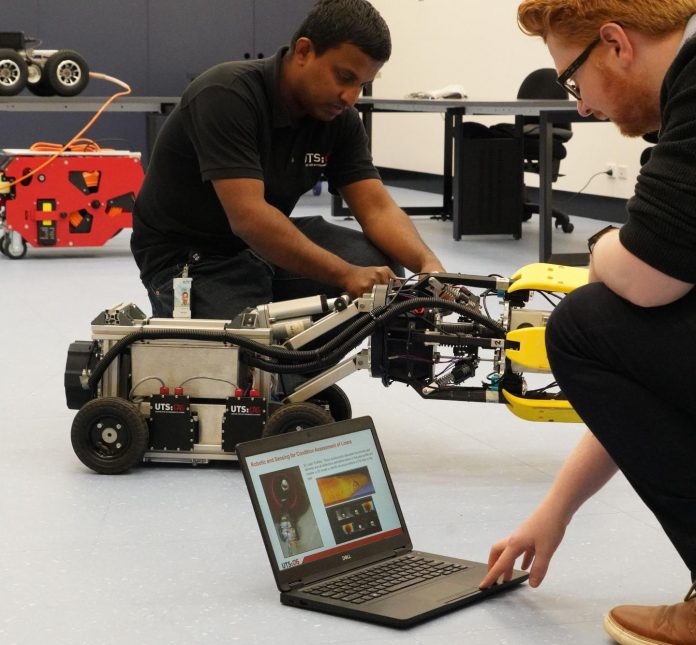IMAGE: Developing a robotics solution to a multi-billion dollar global issue makes UTS and our industry partner Sydney Water the winner of a prestigious national award at the Australian Water Association’s…
view more
Credit: UTS
They National Research Innovation Award (sponsored by Water Research Australia) was presented for Innovative Sensor Suites and Intelligent Robotics for Condition Assessment of Concrete Sewers – a project delivering a comprehensive tool to access the condition of concrete sewerage pipes.
This Award recognises the significance of the innovative sensing and robotic toolkit, a major technological advancement for utility companies managing ageing underground assets.
The collaborative research project by the UTS ipipes team – led by Professor Sarath Kodagoda – and Sydney Water has developed a more efficient and safer way to meet a common challenge to water authorities in many cities globally – how to identify and maintain the critical network of concrete sewer pipes laid over a hundred years ago. Sydney Water estimates it spends @ $40 million annually rehabilitating sewers, relying on manual inspection to identify damage or areas for concern with staff required to enter the sewers for a visual inspection.
“Using a multi-sensor fusion approach sensors and infrastructure robotics for remote inspections we can now collect and collate crucial data and apply machine learning, which will help make timely decisions to save renewal costs and prevent harm to the environment, health and economic activity,” said Professor Kodagoda.
This information can also reduce out-of-service times and the excavation work which causes great inconvenience to the public, public transport and other road users. It can also help save costs and extend pipe life by identifying problems before they become issues.
The team developed a robotic system that enters the sewer through a 600mm diameter manhole, then expands within to either the 2.5 or 1.5 metre diameter pipes, which makes for safe inspections in confined spaces.
The Australian Water Association’s Chief Executive Corinne Cheeseman said winners found innovative ways to sustainably manage water resources, protect people, and support communities.
###
TDnews















